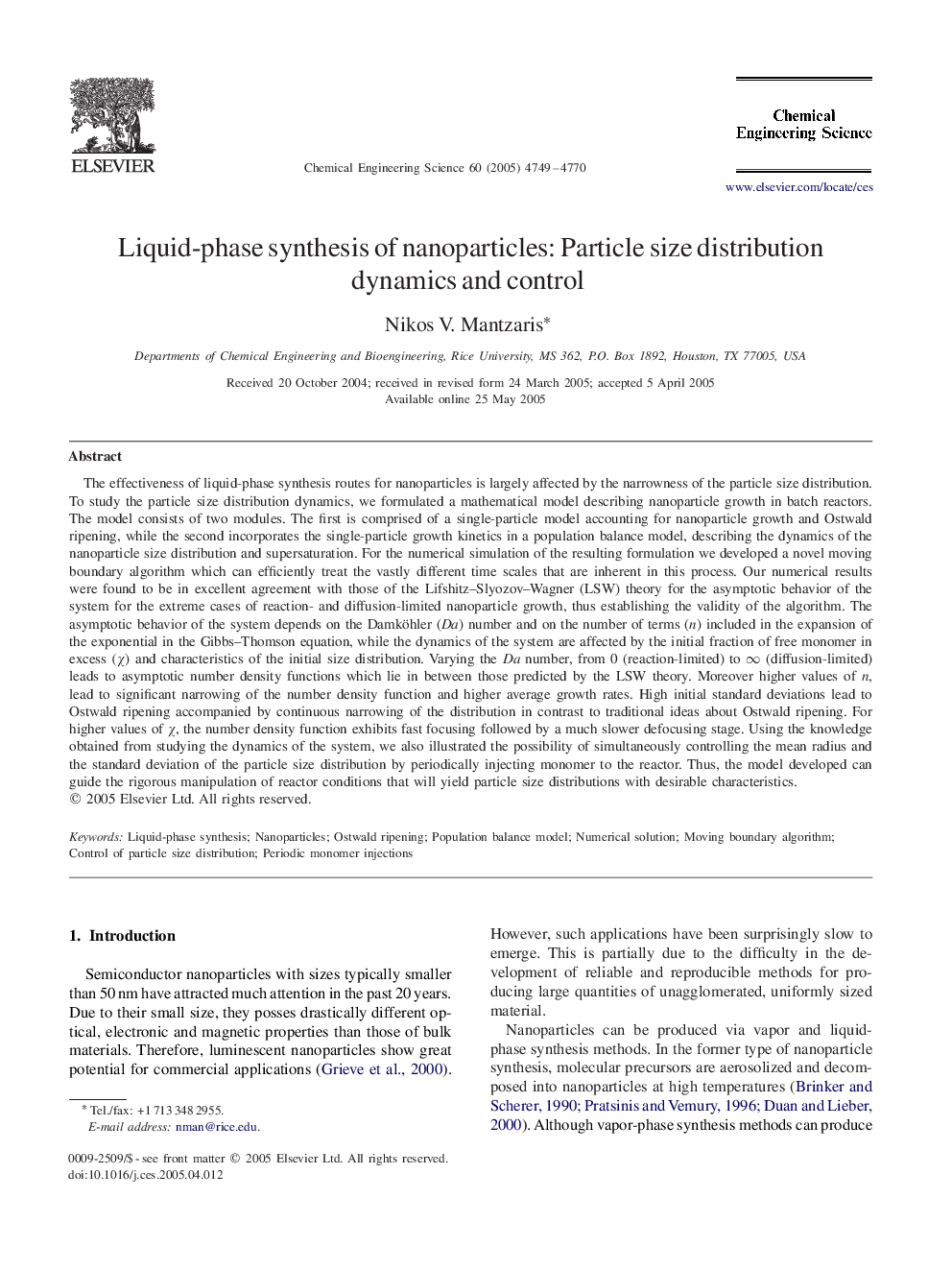| Article ID | Journal | Published Year | Pages | File Type |
|---|---|---|---|---|
| 159398 | Chemical Engineering Science | 2005 | 22 Pages |
The effectiveness of liquid-phase synthesis routes for nanoparticles is largely affected by the narrowness of the particle size distribution. To study the particle size distribution dynamics, we formulated a mathematical model describing nanoparticle growth in batch reactors. The model consists of two modules. The first is comprised of a single-particle model accounting for nanoparticle growth and Ostwald ripening, while the second incorporates the single-particle growth kinetics in a population balance model, describing the dynamics of the nanoparticle size distribution and supersaturation. For the numerical simulation of the resulting formulation we developed a novel moving boundary algorithm which can efficiently treat the vastly different time scales that are inherent in this process. Our numerical results were found to be in excellent agreement with those of the Lifshitz–Slyozov–Wagner (LSW) theory for the asymptotic behavior of the system for the extreme cases of reaction- and diffusion-limited nanoparticle growth, thus establishing the validity of the algorithm. The asymptotic behavior of the system depends on the Damköhler (Da) number and on the number of terms (n ) included in the expansion of the exponential in the Gibbs–Thomson equation, while the dynamics of the system are affected by the initial fraction of free monomer in excess (χ)(χ) and characteristics of the initial size distribution. Varying the Da number, from 0 (reaction-limited) to ∞∞ (diffusion-limited) leads to asymptotic number density functions which lie in between those predicted by the LSW theory. Moreover higher values of n , lead to significant narrowing of the number density function and higher average growth rates. High initial standard deviations lead to Ostwald ripening accompanied by continuous narrowing of the distribution in contrast to traditional ideas about Ostwald ripening. For higher values of χχ, the number density function exhibits fast focusing followed by a much slower defocusing stage. Using the knowledge obtained from studying the dynamics of the system, we also illustrated the possibility of simultaneously controlling the mean radius and the standard deviation of the particle size distribution by periodically injecting monomer to the reactor. Thus, the model developed can guide the rigorous manipulation of reactor conditions that will yield particle size distributions with desirable characteristics.
